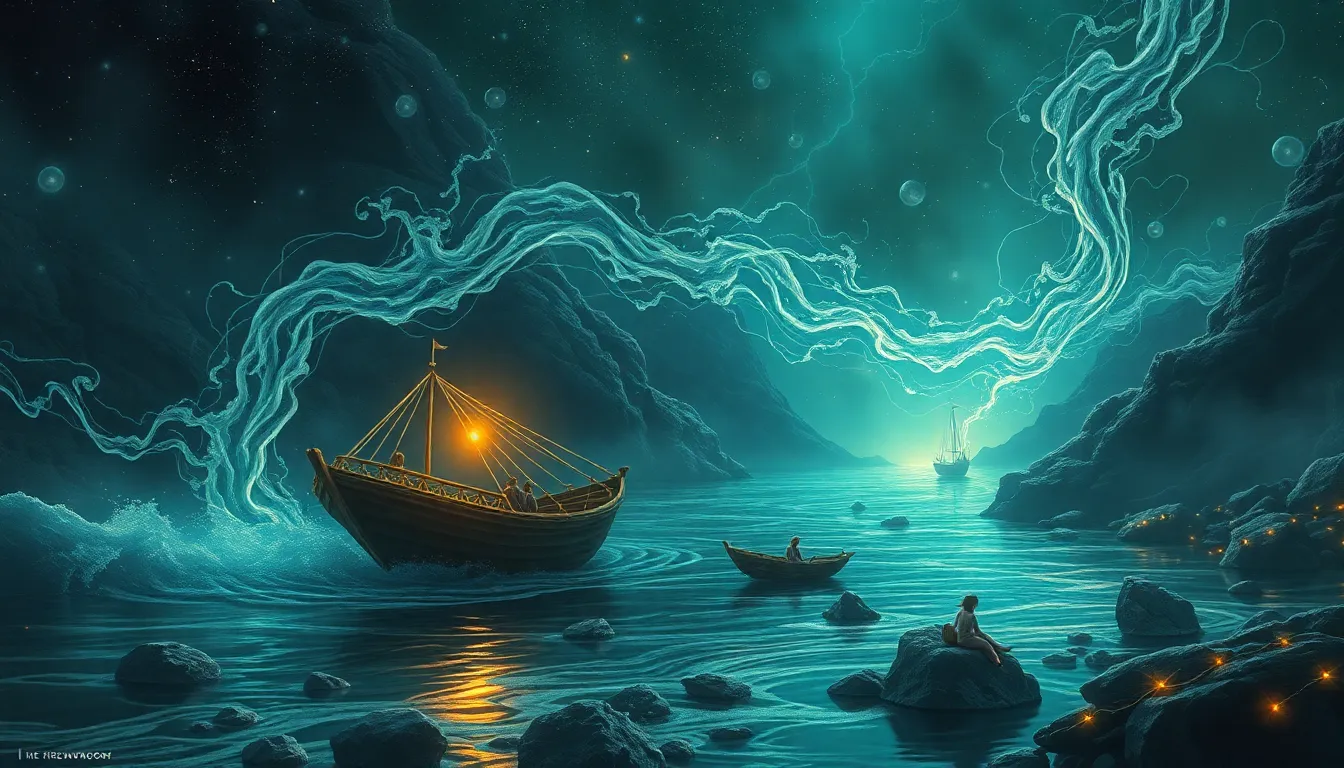The River of the Spirits: Myths of Ghostly Encounters
Introduction: The Allure of Ghostly Myths
Ghost stories have held a significant place in the tapestry of human culture throughout history. These tales serve not only as entertainment but also as a means of exploring profound questions about life, death, and what lies beyond. Within this rich tradition, the concept of the “River of the Spirits” emerges as a powerful metaphor, representing the boundary between the living and the dead. This river symbolizes the journey souls undertake after death, serving as a bridge between two worlds.
Historical Context: The Origins of Ghostly Myths
From ancient times, various cultures have developed beliefs surrounding spirits and the afterlife. Many of these beliefs are intertwined with the natural world, particularly rivers, which are often seen as conduits for souls. For instance, Greek mythology introduces us to the River Styx, a foreboding stream that souls must cross to enter the realm of the dead. This historical context lays the foundation for understanding how rivers have been envisioned as pathways for the departed.
Cultural Variations: Ghostly Encounters Across the Globe
Ghostly myths are not confined to one culture; they manifest uniquely around the world. Here are some notable examples:
- Japan: The Yūrei, or restless spirits, are central to Japanese ghost lore. They are often depicted as wandering near bodies of water, seeking closure for their untimely deaths.
- Mexico: During Día de los Muertos (Day of the Dead), families honor their deceased by creating altars and visiting cemeteries, believing that the spirits return to visit the living. Rivers in this context can symbolize the flow of life and death.
- Europe: In many European cultures, ghosts are thought to inhabit specific locations, often near rivers or lakes, where they can linger between worlds. Folklore about the White Lady, a ghostly figure associated with water, is common across several countries.
The River of the Spirits: Symbolism and Significance
The river serves as a potent symbol of transition and transformation. It is not merely a physical entity but a spiritual one that connects the realms of the living and the dead. Rivers are often seen as sacred spaces, representing the journey of the soul. The act of crossing a river can symbolize the passage from life to death, making the river a powerful motif in ghostly encounters.
Common Themes in Ghostly Encounters
Many ghost stories share recurring themes that resonate with audiences. These themes often include:
- Unresolved Issues: Spirits may linger due to unfinished business or emotional ties to the world of the living.
- Quest for Closure: Ghostly encounters often revolve around the need for resolution, whether it be forgiveness or reconciliation.
- Transformation: The river metaphor emphasizes the fluidity of life and death, highlighting the potential for personal growth through these experiences.
These themes align closely with the metaphor of the river, illustrating how ghostly tales reflect deeper human concerns and desires.
Modern Interpretations: Ghostly Encounters in Contemporary Culture
In recent years, there has been a resurgence of interest in ghost stories within popular culture. Movies, books, and television shows frequently revisit themes of the supernatural, often blending traditional myths with modern narratives. This contemporary fascination can be seen in:
- Films that explore ghostly encounters, such as “The Others” and “Ghost,” which depict personal stories of love and loss.
- Television series like “Ghost Adventures,” where modern-day ghost hunters investigate haunted locations, including those near rivers.
- Literature that delves into the psychology of fear and the unknown, often incorporating elements of folklore and myth.
These modern interpretations both reflect and diverge from traditional ghostly myths, illustrating the evolving nature of our fascination with the supernatural.
Personal Accounts: Eyewitness Stories of Ghostly Encounters
Many individuals claim to have experienced ghostly encounters, particularly near rivers. These personal narratives often share common elements, such as:
- Witnessing apparitions or unexplained phenomena.
- Feeling a strong emotional connection to a specific location.
- Experiencing a sense of peace or closure following the encounter.
These accounts provide valuable insights into how ghostly encounters resonate with personal experiences and cultural beliefs.
The Science Behind Ghostly Encounters: Psychological and Environmental Factors
While ghostly encounters are often attributed to supernatural causes, there are psychological and environmental factors at play. Some explanations include:
- Pareidolia: The human tendency to perceive familiar shapes, such as faces, in random stimuli, which can lead to sightings of apparitions.
- Sleep Paralysis: A phenomenon where individuals wake up unable to move, often accompanied by vivid hallucinations, which can be misinterpreted as ghostly encounters.
- Environmental Factors: Low-frequency sounds, magnetic fields, and even the presence of mold can contribute to feelings of unease and perceptions of ghostly presences.
Understanding these factors can demystify some ghostly experiences while still leaving room for the unknown.
The Role of Folklore in Preserving Ghostly Myths
Folklore plays a crucial role in transmitting ghostly myths across generations. Through storytelling, communities preserve their cultural heritage and share lessons about life, death, and the human experience. Folklore fosters:
- A sense of community and belonging through shared narratives.
- Opportunities for cultural expression and the exploration of moral dilemmas.
- The passing down of traditions and beliefs that shape identity.
In this way, ghostly myths remain vibrant and relevant, continuously evolving while rooted in the past.
Conclusion: The Enduring Legacy of Ghostly Encounters
The impact of ghost myths on society and individual beliefs is profound. They challenge our understanding of life, death, and the mysteries that lie beyond. The ongoing fascination with the supernatural, particularly the symbolism of the River of the Spirits, serves as a reminder of our collective quest for meaning and connection. As we navigate our own lives, these stories encourage us to reflect on our relationships, unresolved issues, and the universal journey toward closure and understanding.



